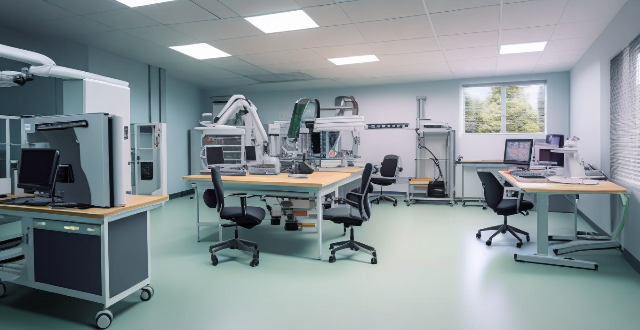Technology has revolutionized sports biomechanics analysis, providing new tools and methods for coaches, athletes, and researchers. Video analysis software allows frame-by-frame review of performances, wearable technology provides real-time data on an athlete's physiology, force plates measure ground reaction forces, motion capture systems track movements in three dimensions, and computer simulation modeling creates virtual models of an athlete's movements. These technologies have made it easier than ever before to collect and analyze data on an athlete's performance, leading to improved training programs, injury prevention, and overall performance optimization.

Enhancing Sports Biomechanics Analysis with Technology
Introduction
Biomechanics analysis in sports plays a crucial role in understanding an athlete's performance, identifying areas for improvement, and preventing injuries. Technology has revolutionized the way biomechanics is studied and applied in sports, providing new tools and methods for coaches, athletes, and researchers. In this article, we will explore various ways technology can be utilized to enhance sports biomechanics analysis.
Video Analysis Software
One of the most significant advancements in sports biomechanics analysis is video analysis software. This technology allows coaches and analysts to record and review athletes' performances frame by frame, enabling them to identify subtle nuances that may not be visible during live observation. Video analysis software can also track an athlete's movements over time, providing valuable data on speed, acceleration, and deceleration patterns. Additionally, some software programs offer features such as motion tracking, which can help analyze an athlete's technique and form.
Wearable Technology
Wearable technology has become increasingly popular in recent years, and it has found its way into sports biomechanics analysis. Devices like fitness trackers, smartwatches, and heart rate monitors can provide real-time data on an athlete's performance, including their heart rate, calories burned, and distance covered. This information can help coaches tailor training programs to each athlete's specific needs and monitor their progress over time. Wearable technology can also detect changes in an athlete's physiology, such as increased stress levels or fatigue, allowing coaches to make adjustments to prevent injury and optimize performance.
Force Plates and Pressure Mats
Force plates and pressure mats are essential tools for measuring an athlete's ground reaction forces (GRF) during activities like jumping, running, or weightlifting. These devices can measure the amount of force exerted by an athlete's feet on the ground, providing valuable insights into their balance, stability, and power output. By analyzing GRF data, coaches can identify areas where an athlete may need to improve their technique or strengthen specific muscle groups to increase their overall performance.
Motion Capture Systems
Motion capture systems use cameras and sensors to track an athlete's movements in three dimensions. This technology provides detailed information on an athlete's joint angles, range of motion, and body positioning during various activities. Motion capture systems can help coaches identify flaws in an athlete's technique or form that may lead to injuries or reduced performance. They can also be used to create personalized training programs based on an athlete's unique biomechanics.
Computer Simulation Modeling
Computer simulation modeling involves creating virtual models of an athlete's movements using mathematical equations and algorithms. This technology allows researchers to simulate different scenarios and test hypotheses about how changes in an athlete's technique or equipment might affect their performance. For example, computer simulation modeling can help determine the best design for a shoe sole or the optimal trajectory for a golf swing. By using computer simulation modeling, researchers can gain valuable insights into the complex interactions between an athlete's body and their environment.
Conclusion
Technology has significantly impacted sports biomechanics analysis by providing new tools and methods for coaches, athletes, and researchers. From video analysis software to wearable technology and motion capture systems, these technologies have made it easier than ever before to collect and analyze data on an athlete's performance. As technology continues to advance, we can expect even more innovative solutions for enhancing sports biomechanics analysis in the future.